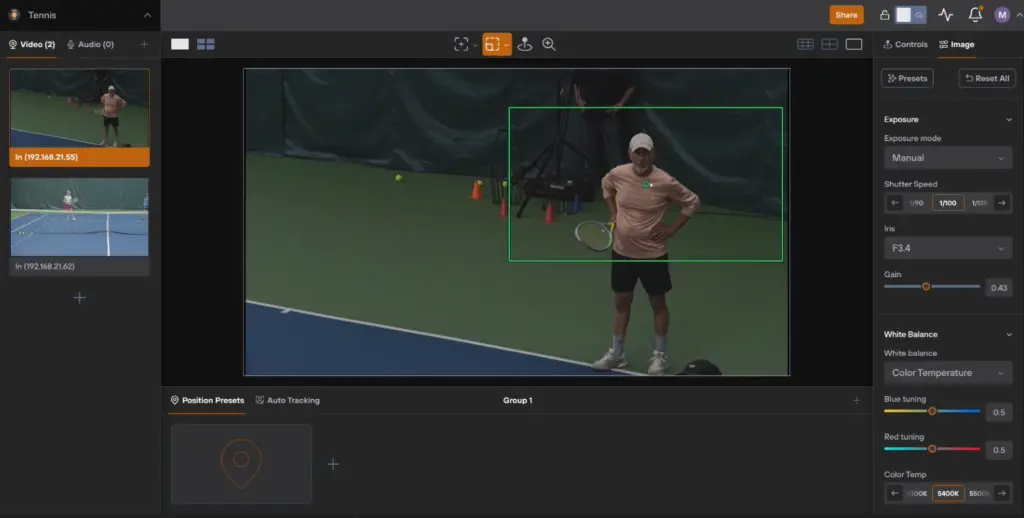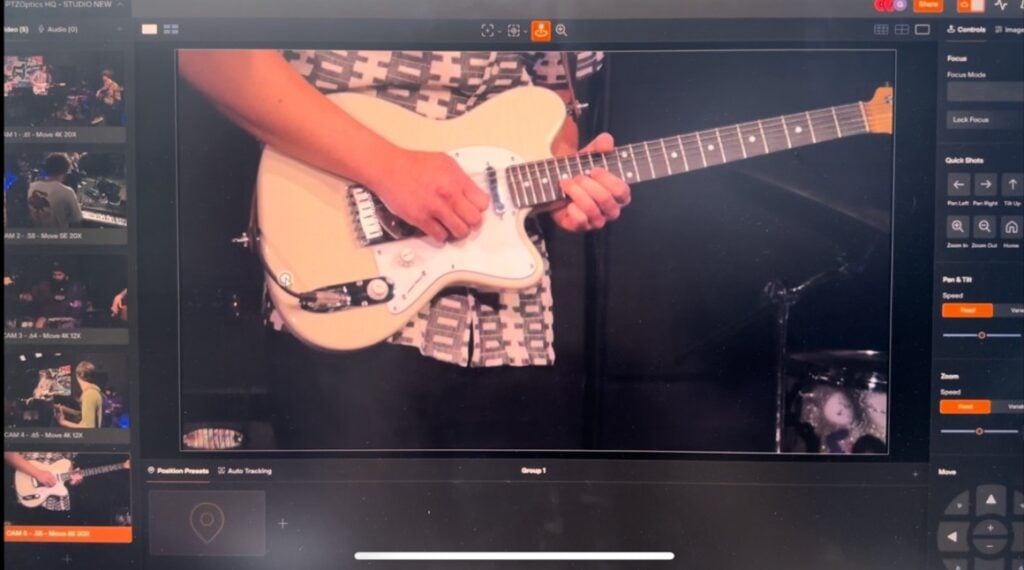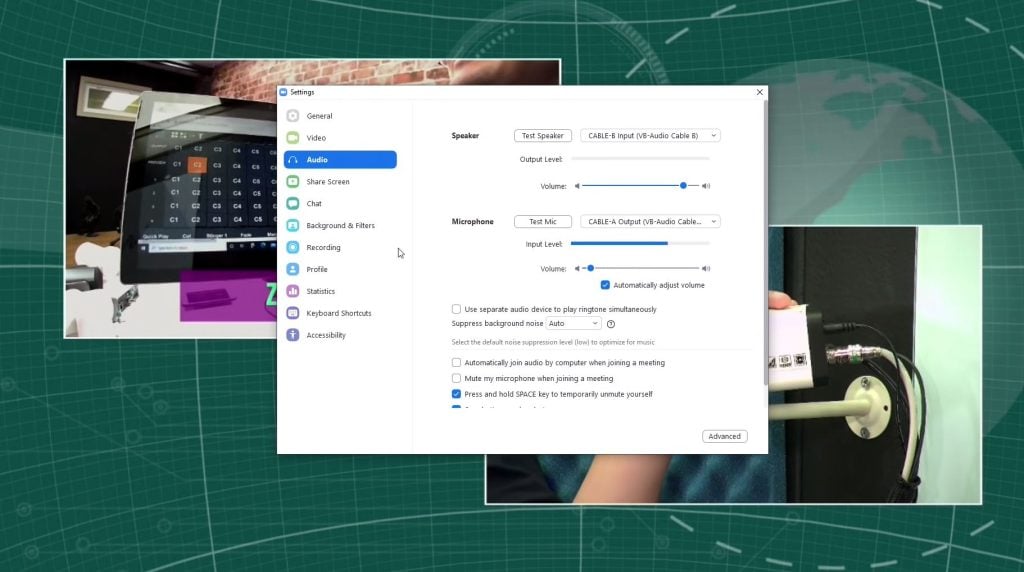How to live stream with vMix
Written by Paul Richards on October 26, 2020
Live Streaming with vMix
One of the most popular features of vMix is the ability to stream live productions over the internet. vMix makes live streaming simple and offers many powerful features and customization settings to help you get the most out of your live stream.
There is an ever-growing list of live streaming providers from free social media sites to paid professional content delivery networks. Each has its own feature set and its own technical requirements.
Getting Started
To get started, click on the gear icon next to the Stream button at the bottom of the interface. At the very top of the dialog box, you will see the Profile section. This will enable you to save and recall specific streaming settings. This is perfect is you find yourself using different providers and settings for various productions.
Right below that, you will see boxes for streams one, two, and three. Every edition of vMix enables you to stream up to three platforms simultaneously.
Choosing Your Provider
In the destination field, you will see an updated list of live streaming providers. You will likely find your provider on the list. However, since new providers are popping all the time, yours may not be on there. Do not worry, you can always set up your stream manually. To do that, choose Custom RTMP Server and enter the URL and stream name or key provided by your streaming provider.
If your provider is on the list, select it, and you can log into your streaming or social media account directly. You will notice that some of the dialog boxes are slightly different at this point. However, with most, you will just sign in and add some information. Some providers offer you multiple channels to stream to. Once you log in, these will be available from a dropdown menu.
Stream Settings
Once you are signed in and have entered any necessary information, you can choose your stream’s quality. Depending on your edition of vMix, there are multiple presets ranging in quality from 360p to 4K. Most live-streaming platforms will give you suggested guidelines, and you are likely to find what you need on this list. However, if you need something different, you can choose any of the presets, click the gear icon, and change the settings.
When considering the quality of your stream, you will mostly be looking at resolution and bitrate. Your choice should be based on your provider recommendations, the quality of your production, and your internet connection’s speed and reliability. Most streamers want their resolution to match the resolution of their production, especially when it comes to HD and 4K productions. They also want to use as a high of a bitrate as possible. However, this can lead to trouble if the internet connection is not fast enough.
Accounting for Network Resources
Your upload speed needs to be higher than your bitrate, or you will drop frames, and the stream could fail. It is a best practice to use a bitrate that is one half of your upload speed or less to leave room for network fluctuations. It is essential to know your internet speed and test it. When testing your internet speed, be sure to do so under similar conditions as when you will be streaming. For instance, if you are sharing a network with other users, you will want to test while using the network resources at the same level as your production time.
Bandwidth is measured in bits and the word “bandwidth” is used to describe the maximum data transfer rate of your internet connection. One megabit = 1,000 kilobits. Your internet speeds are measured in upload and download speeds. Megabits are used to measure the size of the bandwidth pipeline between your computer and the internet.
| Resolution | Pixel Count | Frame Rate | Quality | Bandwidth |
| 4K 30fps | 3840×2160 | 30fps | High | 30Mbps |
| 4K 30fps | 3840×2160 | 30fps | Medium | 20Mbps |
| 4K 30fps | 3840×2160 | 30fps | Low | 10Mbps |
| 1080p60fps | 1920×1080 | 60fps | High | 12Mbps |
| 1080p60fps | 1920×1080 | 60fps | Medium | 9Mbps |
| 1080p60fps | 1920×1080 | 60fps | Low | 6Mbps |
| 1080p30fps | 1920×1080 | 30fps | High | 6Mbps |
| 1080p30fps | 1920×1080 | 30fps | Medium | 4.5Mbps |
| 1080p30fps | 1920×1080 | 30fps | Low | 3Mbps |
| 720p30fps | 1280×720 | 30fps | High | 3.5Mbps |
| 720p30fps | 1280×720 | 30fps | Medium | 2.5Mbps |
| 720p30fps | 1280×720 | 30fps | Low | 1.5Mbps |
The chart above displays various bitrate/bandwidth choices you will have for your live streams. Using this chart and your available uploads speeds, you should be able to map out the number and quality of live streams your internet connection can support. A general rule of thumb says that you should only use half of your available upload speeds for live streaming (Download speeds don’t help us with live streaming). Therefore, if you have 10 Mbps of available upload speed, you should only be live streaming with 5 Mbps. Leaving headroom in your upload speeds protects stream from fluctuations in the internet connection which can cause interference with your stream’s consistency. Keep in mind that if live stream to multiple locations at the same time, you are adding to your overall upload bandwidth.
Think about your live stream resolution as the size of your canvas. The bitrate that you select is the amount of data that is used to fill that canvas. Therefore, you can have a high-quality 1080p stream with a bit rate of 6 Mbps, or you can have a low-quality 1080p stream with a bit rate of just 2 Mbps. Today, most people will expect at a minimum of 720p video and a bit rate of at least 1.5 Mbps. New reports from Akamai show that most people watching 1080p video find that 6Mbps looks like excellent quality.
So, you may have a choice between live-streaming a single high-quality video stream, or multiple live streams of lesser quality. For example, if you have 10 Mbps of upload speed, you may create a 3 Mbps stream to YouTube and a 2Mbps stream to Facebook. If you are concerned about creating a single high-quality stream than you would only stream to YouTube using 5Mbps. Keep in mind that you can always record an high-quality recording to your local hard drive. Many production experts will record a “high bitrate” mp4 files ranging from 12-100 Mbps. The recordings saved to your local hard drive can be of higher quality than the live streamed recordings available on YouTube and Facebook.
Starting the Stream
When all the settings are the way you want them, you can click Save and Close. You can start your stream from that same window or just click the Stream button on the bottom of the screen. The button will turn orange as it is connecting and the turn to red. If there is a problem with the stream at any point, the indicator will turn to orange. When you are done, hit the button again, and your stream will end.
Pro Tip: If you are live streaming to multiple destinations you can start all of them at the same time by clicking the Stream button. If you want to start each stream at different times, open the Stream settings area and click the individual stream start buttons.






